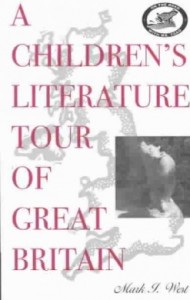 At seventeen, I had one of the thrills of my young life when during a tour of England with my church choir, our anxious chaperones finally let us loose in Oxford for a day. After happily getting lost in the medieval maze of streets, I had a shock of recognition when I encountered “Alice’s Shop.” Was it really the site of the shop in Through the Looking Glass where Alice encountered a knitting sheep? It was indeed, and still recognizable from Tenniel’s illustrations, though he had reversed the position of door and window since Alice was in the Looking-Glass world.
At seventeen, I had one of the thrills of my young life when during a tour of England with my church choir, our anxious chaperones finally let us loose in Oxford for a day. After happily getting lost in the medieval maze of streets, I had a shock of recognition when I encountered “Alice’s Shop.” Was it really the site of the shop in Through the Looking Glass where Alice encountered a knitting sheep? It was indeed, and still recognizable from Tenniel’s illustrations, though he had reversed the position of door and window since Alice was in the Looking-Glass world.
If you’re interested in seeing some of the real-life locations of your favorite children’s stories, and unwilling it leave it to such serendipity as I did, you can look into the 49 sites covered in A Children’s Literature Tour of Great Britain. Each chapter begins with a brief biography of an author (e.g., Robert Louis Stevenson, Edward Lear, E. Nesbit, Frances Hodgson Burnett, and Roald Dahl, as well as Lewis Carroll), followed by equally concise descriptions of sites related to their work. The Carroll section, for example, includes entries on Christ Church College, where he spent his adult life, and the town museum of Guildford, where he died. Full contact information and opening hours are provided for each site. None of them require special permission to visit.
As you might expect, rampant commercialism has invaded many formerly enchanted places. Alice’s Shop now sells Carrollian knickknacks, and an “Alice of Wonderland Centre” with animated life-size models of characters based on Tenniel’s illustrations is a major draw in Llandudno, North Wales, which Carroll never even visited (though his young friend, Alice Liddell, did). And so on through “The Wind in the Willows Attraction,” “The World of Beatrix Potter” . . . well, it’s useful to know what to avoid, as well as what to visit. Not all the sites are so consumer-oriented, of course, and some are absolutely free. You can throw sticks off Posingford Bridge in Ashdown Forest, otherwise known as Poohsticks bridge from Winnie-the-Pooh, for nothing. Apparently you have to bring sticks with you, though, as none are left near the bridge.
Mark I. West, a professor of children’s literature at the University of North Carolina, seems to have his facts pretty straight, but doesn’t include any personal anecdotes about his travels, or many juicy bits about his subjects. You would find the same in any respectable encyclopedia. There is a section of black and white photographs, taken by the author and not very atmospheric, but no maps or other illustrations. West also has little to say about the landscape or countryside that inspired so many great British children’s books; he focuses on houses, objects, or even statues associated with authors, some of which will only interest a real fanatic.
Since I’m not going to Britain myself anytime soon, I would have liked more of an “armchair traveler” type of read, along the lines of the excellent Heidi’s Alp: One Family’s Search for Storybook Europe by Christina Hardyment. West tells us what’s there, but he doesn’t make us feel we’ve been there with him.
(Scarecrow Press, 2003)
